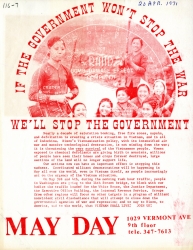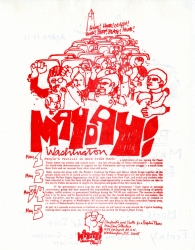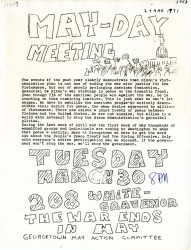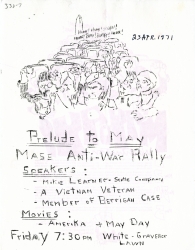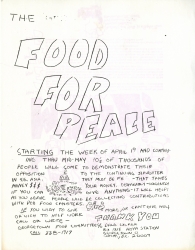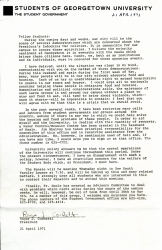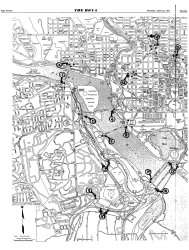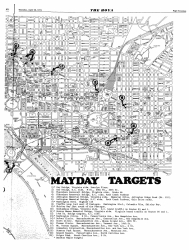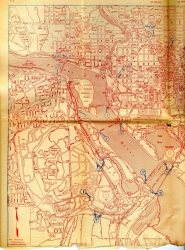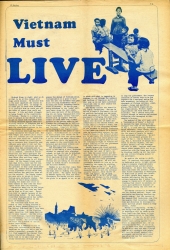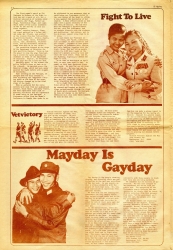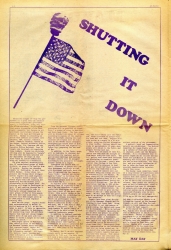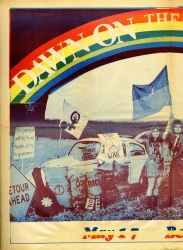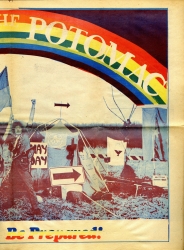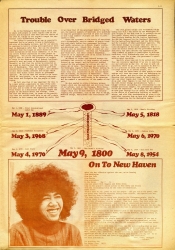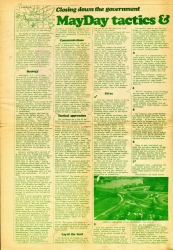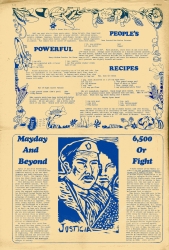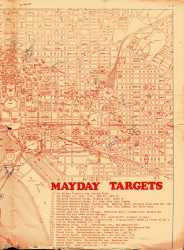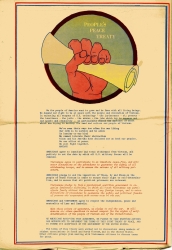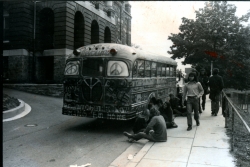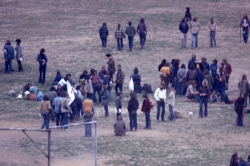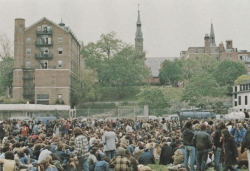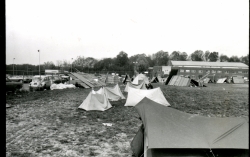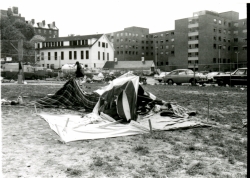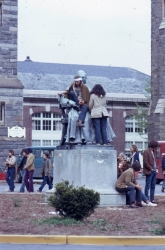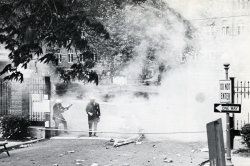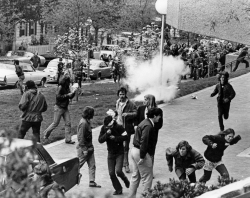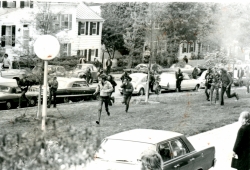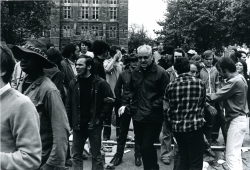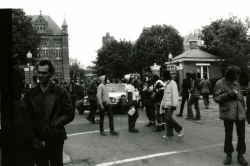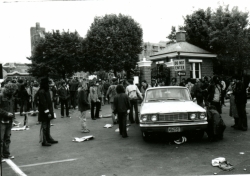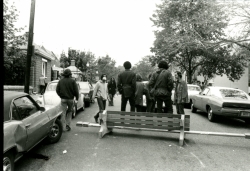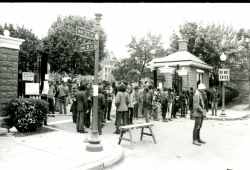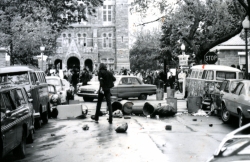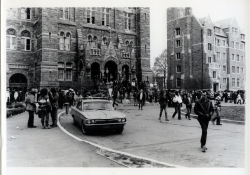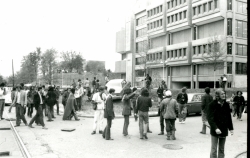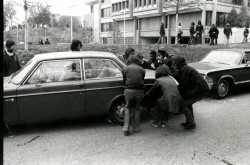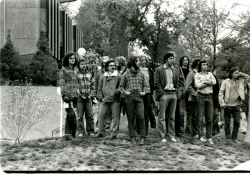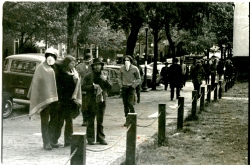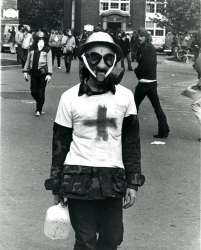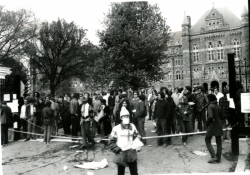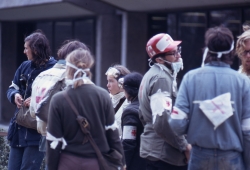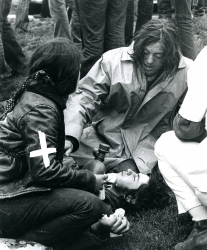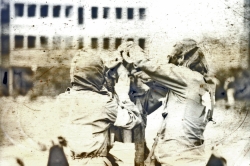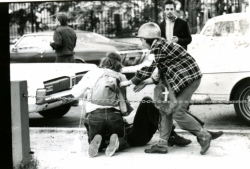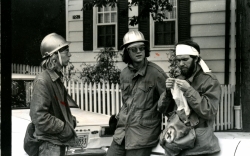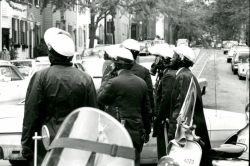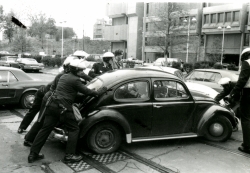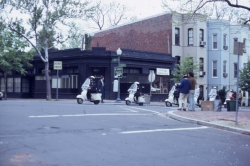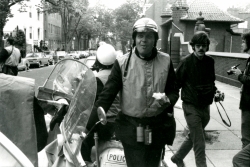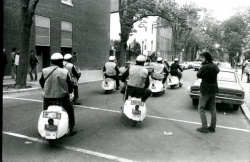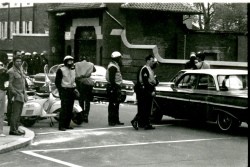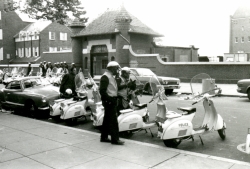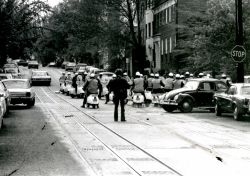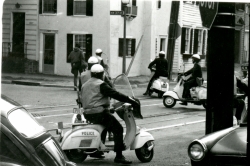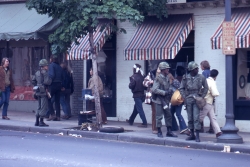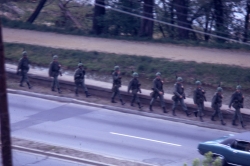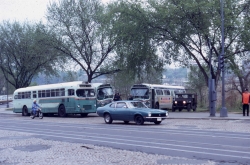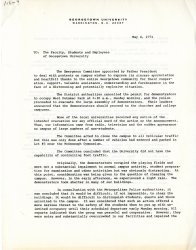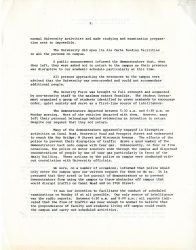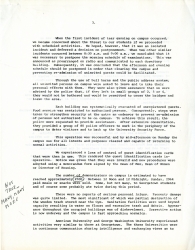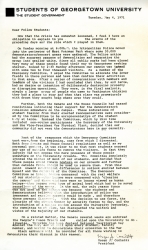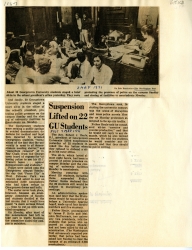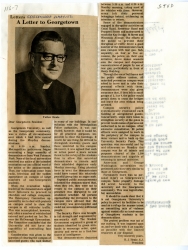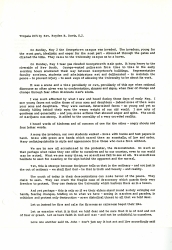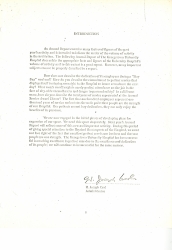The 1971 May Day protests brought tens of thousands of anti-war demonstrators to Washington D.C., the culmination of weeks of anti-war activity in the city that spring. The announced goal of the protests was to disrupt the basic functioning of the federal government through nonviolent action; the immediate focus of the protesters was on snarling traffic to prevent government employees from getting work on Monday, May 3. Their slogan was If the government won’t stop the war, we’ll stop the government.
By the end of May 3, more than 7,000 protesters had been arrested across the city; 5000 more were arrested on May 2, 4 and 5. These represent the largest mass arrests in U.S. history. Ultimately, however, only 79 people were convicted of any offence related to the protests.
In a Washington Post article dated September 23, 2019, longtime political organizer and historian L.A. Kauffman called the event the most influential protest you’ve never heard of and noted that It contributed to helping end the Vietnam War and pioneered a new model of organizing that would shape movement after movement in the decades to come.
This exhibit illustrates the impact and aftermath of events of May 2 and 3, 1971 on the Georgetown University campus through images and documents housed in the University Archives.
Letter from Student Government President Roger J. Cochetti, April 21, 1971
Fellow students: During the coming days and weeks, our city will be the scene of several demonstrations which are concerned about the President’s Indochina War policies. It is impossible for our campus to ignore these activities. I believe the majority sentiment at Georgetown is in sympathy with the cause which brings these citizens here. Hence we, both as an institution and as individuals, must be prepared for these upcoming events . . .
“Mayday Targets.” The Hoya, April 22, 1971
Because the targets were publicized in advance, the Nixon Administration was able to successfully deploy federal forces and prevent the protesters from paralyzing the city.
May Day (May Flowers), [May Day Collective, 1971]
This 16 page folio tabloid is likely the source of the map of “targets” printed in The Hoya on April 22, 1971.
“May Day Opposed.” Georgetown Voice, April 27, 1971
Not all students on campus supported the protests as this editorial shows: It is a matter of general tactics and not specific beliefs that lead us to oppose the May Day activities . . .
“Davis: Shut Down the Government!” The Hoya, April 30, 1971
Rennard “Rennie” Cordon Davis, a member of the Chicago 7 and one of organizers of the May Day protests, spoke to students in Gaston Hall on April 28, 1971. The Justice Department filed conspiracy charges against him and two other activists, John Froines and Abbie Hoffman, after the protests. These charges were eventually dismissed.
“Henle Leaves, Forms Committee to Combat May Day Trouble.” The Hoya, April 30, 1971
With University President R.J. Henle, S.J. scheduled to be in Rome at the beginning of May, a six-person committee chaired by James Kelly, Georgetown’s Vice President for Administrative Affairs, was charged with coordinating the University’s response to the protests.
Protesters on campus, Sunday, May 2, 1971
Many of the protesters camped in West Potomac Park adjacent to the National Mall, about two miles east of the University, on Saturday, May 1. Early on the morning of Sunday, May 2, authorities cancelled their camping permit and the Metropolitan police compelled them to vacate the park. Some protesters left D.C.; the remainder, estimated by authorities to number around 12,000, followed the instructions of protest leaders and sought accommodation at local universities and churches. A steady stream entered Georgetown’s campus throughout the morning.
They initially set up tents on the athletic fields but after it began raining, they moved into the dorms at the invitation of students. The University consulted with the Metropolitan police and concluded that clearing campus would probably be impossible. The protesters were allowed to stay and the University opened up its dining facilities to everyone.
The visitors, who were entirely peaceful, left between 5:30 and 6 a.m. the next morning (May 3). However, some left belongings behind which the University took as a sign that they planned to return.
Archivist’s note: Photographs from May 2 and May 3, 1971 housed in the University Archives are not time stamped. As a result, the Archivist is not able to order them in strict chronological order and has opted to arrange the images in this exhibit thematically.
Tear gas at the main gates and on the east side of Lauinger Library, Monday, May 3, 1971
After 8 a.m. on the morning of Monday, May 3, protesters attempted to block traffic on Canal Road, Reservoir Road and Prospect Street. Metropolitan police responded with tear gas and pepper-based gas and drove many of them onto campus. Police helicopters also deployed gas.
At 9:15 a.m. on Monday May 3, the University announced that the exams scheduled to begin at 9:30 were postponed. But given the short notice, it appears that some morning exams did still take place. Afternoon and evening exams were cancelled around noon because of concerns over the ability of faculty and students to reach campus and rumors of an evening curfew in the city.
Protesters at the main gates / in Healy Circle, Monday, May 3, 1971
On May 3, unlike the previous day, food service was limited to those with a university affiliation and campus police, backed up at the University’s request by around 80 D.C. police officers, worked to systematically clear campus buildings of non-GU students and non-registered visitors and to prevent reentry by those not authorized to be on campus By 4:15, the protesters who were estimated by the University to have numbered about 2500 (student estimates place that number much higher) had left campus. There were no reports of serious personal injury and, surprisingly, property damage was quite limited.
The older gentleman (with white hair and glasses) seen mingling with protesters in the first image is Father Thomas R. Fitzgerald, S.J., then Georgetown’s Vice President for Academic Affairs.
Student medics, Monday, May 3, 1971
During the course of the day, student marshals worked, at great personal risk, to try and keep police and demonstrators apart on campus. Students also provided medical assistance and set up an area for washing off tear and pepper gas at the Bles Building on the medical campus.
Metropolitan Police in the streets around the University, Monday, May 3, 1971
Police rode motor scooters through the main gates onto campus multiple times to disperse groups of protesters in addition to deploying tear and pepper gas. There was no consultation with the University over these actions.
Federal troops
Around 12,000 federal troops, including 4,000 paratroopers from the U.S. 82nd Airborne Division, were staged at strategic points around the city. 1500 National Guardsmen were also deployed to assist the Metropolitan police.
Extract from the May 3, 1971 diary entry of Eric Zengota (C’1973, G’1987). Printed in Georgetown Magazine, spring 1991
This diary entry describes the events of the morning of Monday, May 3, as experienced by a student on campus.
Memo to the Faculty, Students and Employees of Georgetown University from the University’s Emergency Committee, May 4, 1971
In this memo, the Committee relates the course of events from 6:30 a.m. on Sunday, May 2 through mid-afternoon on Monday, May 3. Note the correction to the number of protesters written by an unknown party on page 3.
Letter to Fellow Students from the Student Government President Roger J. Cochetti, May 4, 1971
Mr. Cochetti, a member of the University’s Emergency Committee, lays out in this memo how he dissented from most of the decisions of that Committee.
Washington Post articles, May 8 and May 9, 1971. “24 Students Disciplined for Post-Mayday Sit-in.” Georgetown Today, May 1971
Students staged an eight-hour sit-in at the President’s Office on May 8, 1971 seeking a public apology from the University to protesters cleared from campus and donations for medical and legal fees incurred by arrested students, among other demands.
Participants in the sit-in were initially suspended when they refused to leave at the President’s Office’s normal closing hour. However, these suspensions were rescinded the next day. The Hoya later reported in its September 5, 1971 issue that this was done because President R.J. Henle, S.J. was not aware that the suspensions were appealable and “desired to avoid prolonging the issue.” The students were required to appear before a University hearing board.
"May Day Lives" flyer, listing target locations for protests on Tuesday, May 4, 1971
The May 4, 1971 issue of the Evening Star reported that about 3000 protesters held a two hour rally at the Justice Department on May 3, after marching down 13th Street from Franklin Park. The rally ended with hundreds of arrests.
“A Letter to Georgetown” from Georgetown President R.J. Henle, S.J. Published in The Georgetowner, May 21, 1971
Georgetown University, as well as the Georgetown Community, was a victim of circumstances over which it had little control during the Mayday demonstrations . . .
Text of speech given by College of Arts and Sciences Dean Royden B. Davis, S.J., at the College Tropaia ceremony, 1971
Fr. Davis reflects on the May Day events in these remarks delivered less than three weeks later.
Introduction to the Georgetown University Hospital Annual Report for 1970-1971
The fact that the events of May Day weekend are referenced in an otherwise statistics ladden report provides a sense of the significant impact of the protests on the work of the hospital.
“Student Govt. To Sue DC Police For May Day Campus Invasion.” The Hoya, November 19, 1971
The civil suit filed on May 1, 1972 on behalf of all Georgetown students arrested or injured on May 3, 1971 sought injunctive relief for all the unlawful governmental action of last May, as well as monetary damages, according to later reporting by the Voice on September 12, 1972. There is no information in the University Archives as to the disposition of this suit.
Curated by University Archivist Lynn Conway
If you were on campus during the May Day protests and have memories (or memorabilia) to share, the Archivist would love to hear from you. Her email address is: conwayl@georgetown.edu.

